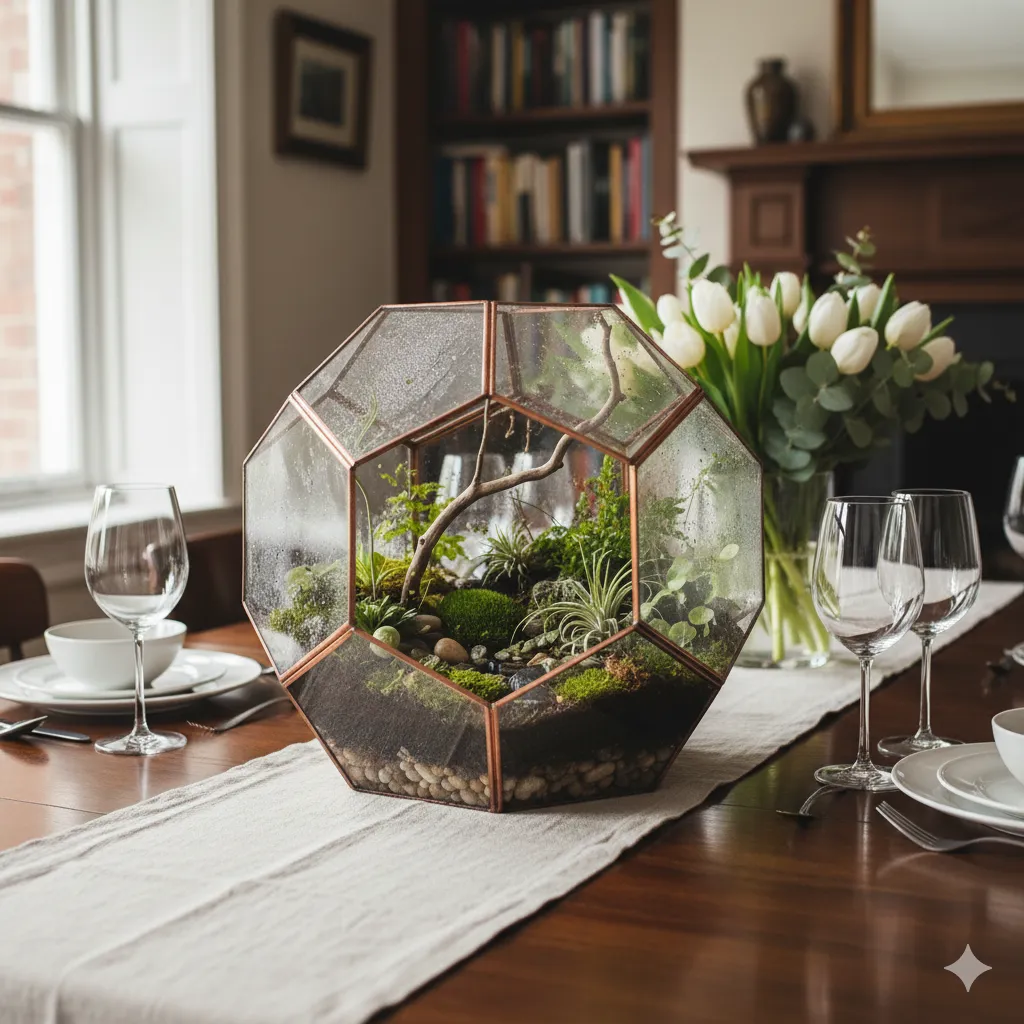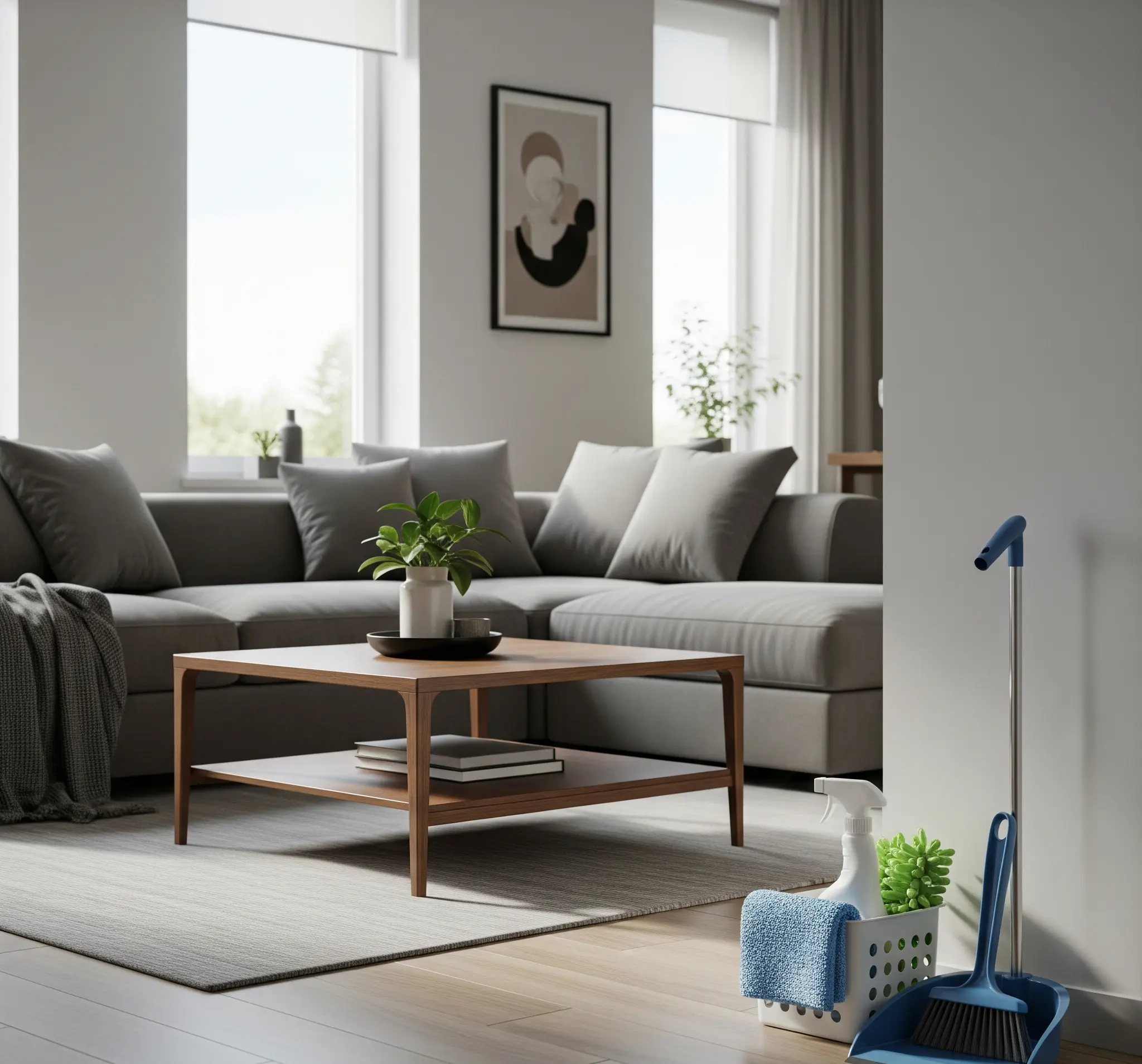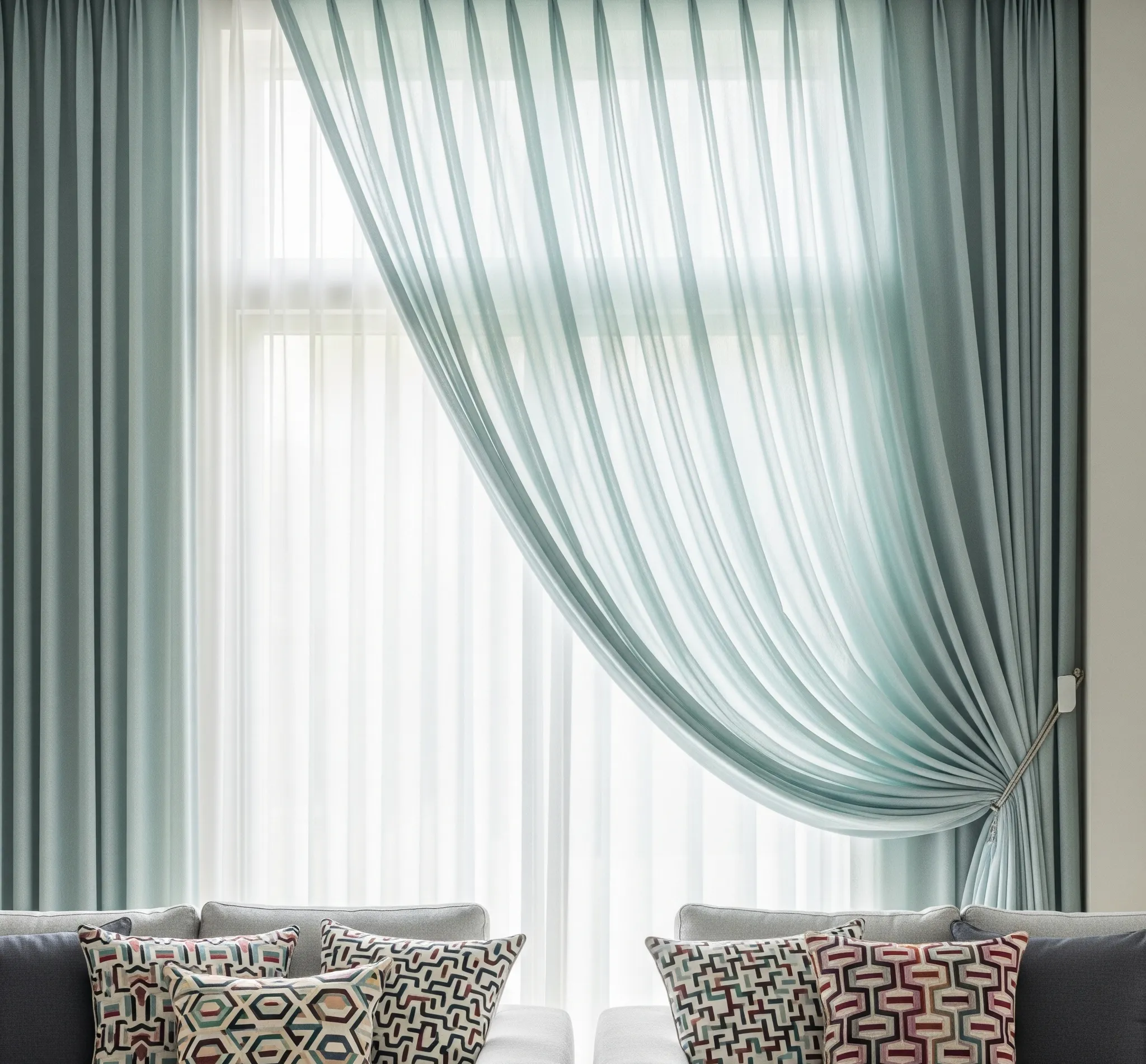You want a tiny jungle on your desk that doesn’t turn into a tragic moss graveyard? Totally doable. A terrarium can be low-maintenance, high-reward, and surprisingly therapeutic to build.
Pick the right container, layer it right, and choose plants that actually like your vibe (and your window). Let’s make one that stays green and gorgeous—not foggy, moldy, or sad.
Pick the Right Container (Closed vs. Open)
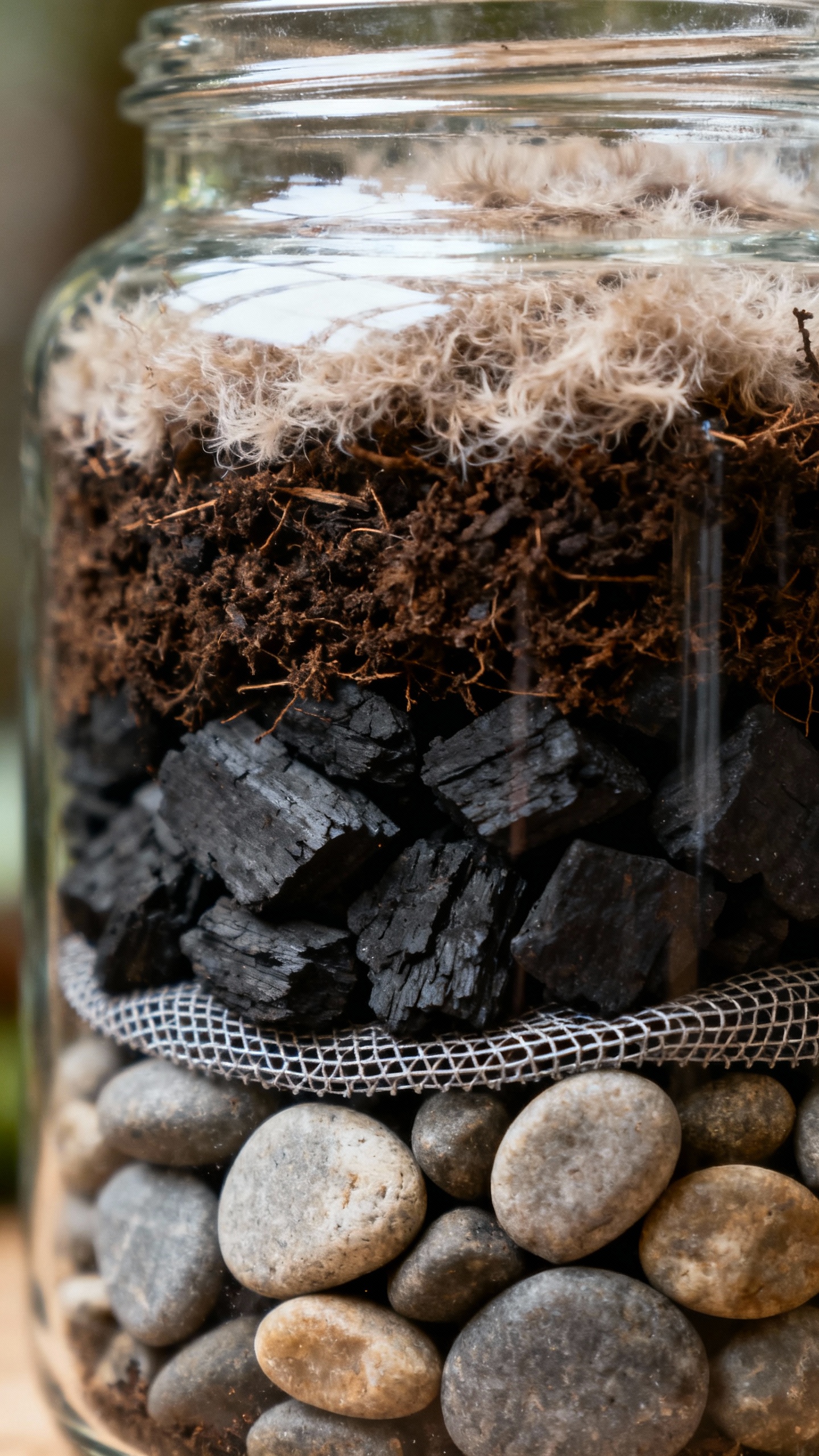
Choosing the container sets the vibe and the maintenance level.
Closed containers trap humidity and love moisture-loving plants. Open containers breathe more, so they prefer dry conditions.
- Closed terrariums: Jars with lids, cloches, old candy jars. Great for ferns, moss, and humidity divas.
- Open terrariums: Bowls, wide vases, geometric planters.
Perfect for succulents and cacti.
- Size: Aim for something you can actually arrange in—6–10 inches wide gives you room to play.
- Material: Glass looks best. Avoid containers with colored glass that messes with light.
Pro tip on shape
If you’re new, choose a wide opening. You’ll make fewer messes, and plant placement won’t make you question your life choices.
Gather the Essentials (Don’t Skip Layers)
Think of a terrarium like a tiny ecosystem with plumbing.
If you skip layers, you’ll get swamp vibes and root rot. Here’s the short shopping list:
- Drainage layer: Pebbles or aquarium gravel (1–2 inches)
- Activated charcoal: A thin layer to filter odors and keep water fresh
- Substrate/soil:
- For tropical/closed: Potting mix + orchid bark + perlite (light and airy)
- For desert/open: Cactus mix + extra perlite or pumice
- Plants: Size matters—choose small, slow growers
- Decor: Rocks, moss, driftwood (optional but cute)
- Tools: Long tweezers or chopsticks, a spoon, soft brush, spray bottle
Soil ratios that actually work
- Tropical: 2 parts potting mix, 1 part orchid bark, 1 part perlite
- Desert: 2 parts cactus mix, 1 part pumice/perlite, a pinch of coarse sand
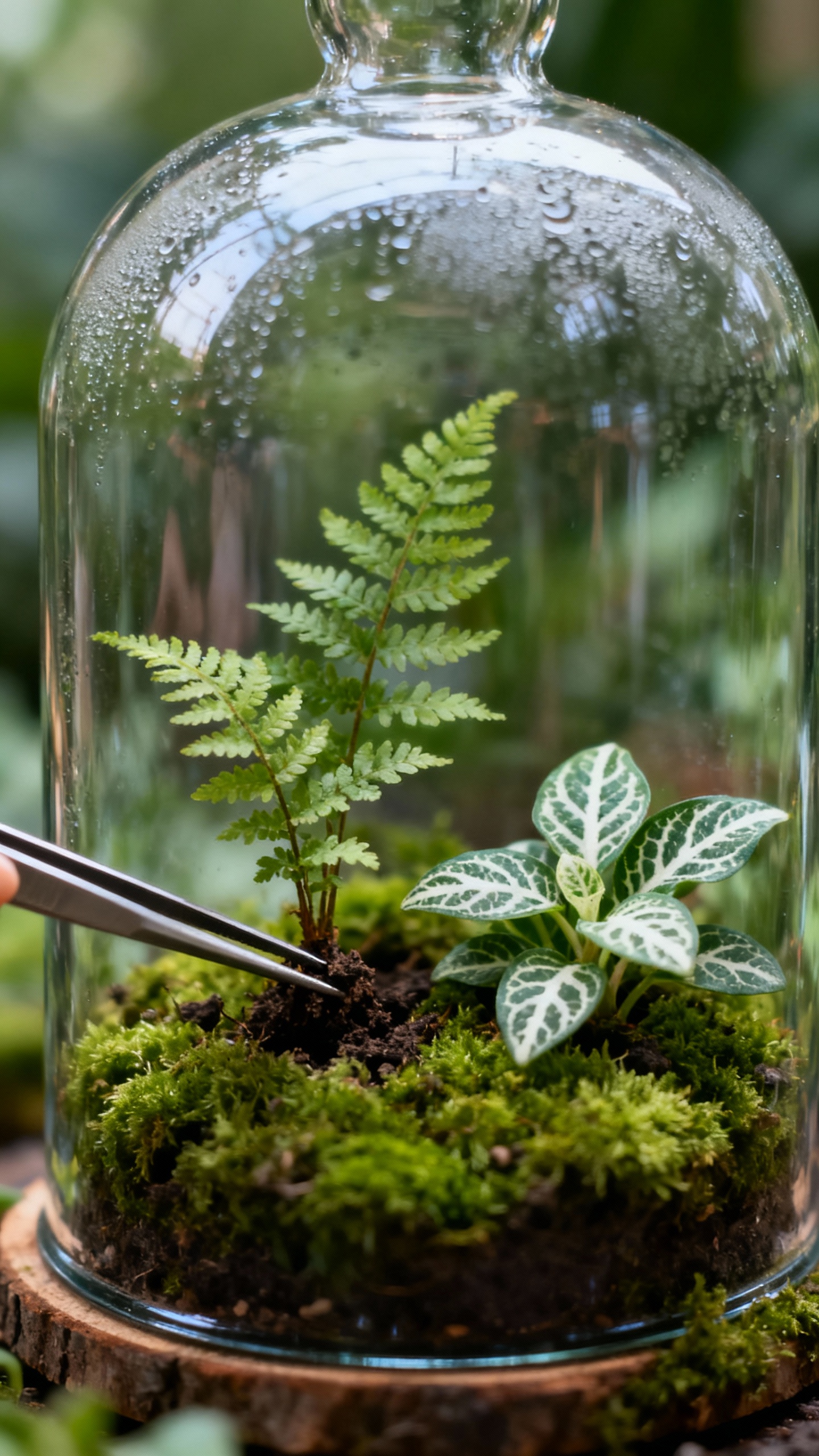
Choose Plants That Won’t Outgrow the Party
If you cram a ficus in a jam jar, it will revolt. Choose plants that stay small, like these:
- For closed terrariums:
- Moss (sheet, cushion, haircap)
- Mini ferns (button, lemon button)
- Pilea depressa, Pilea glauca
- Fittonia (nerve plant)
- Pepperomia (tiny varieties)
- Selaginella (club moss)
- For open terrariums:
- Haworthia and Gasteria
- Echeveria (small ones), Graptopetalum
- Crassula (mini types)
- String-of-pearls (sparingly, it sprawls)
Rule of thumb: Pick plants that like the same humidity and light.
Don’t mix succulents with moss in a closed jar—someone will cry. Probably you.
Layer It Like a Pro
Ready to build? Here’s the order.
It matters.
- Clean the glass: Start with a spotless container so you don’t trap grime.
- Add drainage: 1–2 inches of pebbles or gravel. This prevents water from suffocating roots.
- Sprinkle activated charcoal: Thin layer to filter and reduce funk.
- Add a barrier (optional): A piece of mesh or coffee filter keeps soil out of the gravel. Neat freaks love this.
- Soil/substrate: Add enough to comfortably seat roots—usually 2–4 inches.
- Planting: Make holes with a spoon, tuck plants in with tweezers, and firm the soil gently.
- Topdress: Add decorative stones, bark, or moss to lock in moisture and make it look finished.
- Clean up: Use a soft brush to dust leaves and glass.
Spray lightly to settle soil.
Design tips that make it look intentional
- Vary heights: Tall plants in back, low growers in front.
- Odd numbers: Group in threes or fives for a natural look.
- Texture contrast: Mix lacy ferns with round-leaf plants or spiky succulents with smooth stones.
Light and Water: The “Don’t Kill It” Settings
You don’t need a grow lab. You just need consistency.
- Light: Bright, indirect is the sweet spot. East or north windows rock.
Avoid harsh sun that cooks leaves or heats glass.
- Closed terrariums: Mist lightly after planting. Then watch the condensation.
- Light fog in the morning: Perfect.
- Heavy droplets all day: Lid off for a few hours.
- Bone dry: Mist or add a tablespoon of water at a time.
- Open terrariums: Water less. For succulents, dribble water at the base every 2–4 weeks, depending on room humidity.
FYI: Terrariums don’t like fertilizer.
It makes plants leggy and invites algae. If you must, use a very diluted feed once or twice a year—otherwise skip it.
Keep It Gorgeous: Maintenance Without the Drama
Good news: once established, terrariums mostly chill. Do small, smart check-ins.
- Trim and pinch: Snip dead leaves and overachievers.
You control the aesthetic—bonsai mindset.
- Wipe the glass: Condensation rings? Wipe with a microfiber cloth. Clean glass = more light.
- Air occasionally: Open closed terrariums for 30–60 minutes monthly to refresh air (IMO, this prevents funk).
- Pest patrol: Fungus gnats?
Let it dry a touch and add a thin sand top layer. Tiny springtails? They’re harmless cleanup crew.
- Rotate: Turn the container weekly so plants don’t lean like they slept weird.
Mold and algae fixes
- White fuzz on soil: Increase airflow, remove affected bits, and ease up on water.
- Green film on glass: Wipe down and reduce direct sun.
Charcoal helps long-term.
- Persistent issues: Add a few springtails (tiny beneficial bugs). They eat mold. Yes, it’s weird.
Yes, it works.
Style It Like You Mean It
Want it to look like a miniature world? Add small details that create depth.
- Hardscape first: Place rocks or wood before plants to set the scene.
- Pathways: Use sand or fine gravel to suggest a trail. Instantly charming.
- Moss mats: They hide soil and hold moisture.
Press gently for good contact.
- Color accents: Use red-tinted Peperomia or a variegated Fittonia for pop.
Miniature rules
Keep props subtle. A tiny bench? Cute.
A plastic dinosaur colony? Maybe not. Unless it’s your vibe.
Then roar.
Common Mistakes (And How to Dodge Them)
Let’s save you from the usual “why is everything dying?” spiral.
- Too much sun: Glass intensifies light. Move it back from the window.
- Overwatering closed terrariums: They recycle moisture. Add water sparingly, like you’re seasoning food.
- Wrong plant mix: Keep humidity lovers together.
Keep desert plants together. No forced friendships.
- Skipping charcoal: It’s the breath mint of terrariums. Don’t skip.
- Dense soil: Compacted soil suffocates roots.
Add perlite or bark for airflow.
FAQ
How often should I water a closed terrarium?
Rarely. After the initial mist, watch condensation. If you see light fog in the mornings and clear glass by afternoon, it’s happy.
If it stays dry for days and leaves wilt, add a tablespoon or two of water and reassess.
Can I put succulents in a closed terrarium?
Not if you want them to thrive. Succulents hate trapped humidity. Use an open container, fast-draining soil, and bright indirect light.
Keep water minimal—think “desert drizzle.”
Why is my terrarium foggy all the time?
Too much moisture or too much heat. Crack the lid for a few hours, move it out of direct sun, and reduce watering. You want a light morning mist, not rainforest-in-a-bottle 24/7.
Do I need fertilizer?
Usually no.
Terrariums grow slowly, and fertilizer can cause algae and leggy plants. If growth stalls for months and plants look pale, use a very diluted, gentle feed—once, then wait.
What’s the best beginner plant combo?
For closed: cushion moss, a small Fittonia, and a mini fern. For open: a Haworthia, a small Crassula, and a chunky piece of driftwood.
Simple, hardy, and cute. IMO, fewer plants look more intentional.
Can I use soil from my yard?
Skip it. Outdoor soil carries pests and compacts in glass.
Use a quality potting or cactus mix with added perlite, and your plants will thank you by not dying.
Conclusion
Terrariums succeed when you match the right container, soil, and plants—and then resist the urge to overwater. Build smart layers, give them bright indirect light, and do small maintenance tweaks instead of big rescues. Do that, and your mini jungle will stay green, gorgeous, and oddly calming to stare at during meetings.
FYI: once you make one, you’ll want five. Consider yourself warned.
